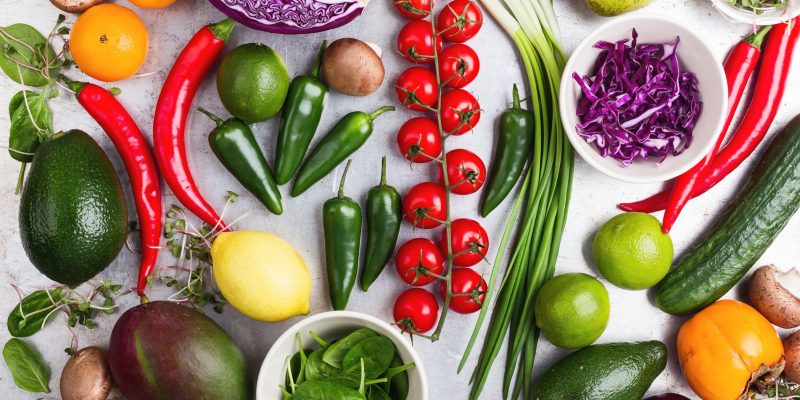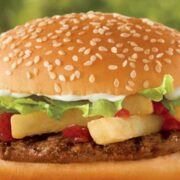Cheapest vegetables and fruits: Nutrients are probably the most critical aspect of human life. All things in and around the universe are composed of elements of some of the other kind.
Whatever we consume is also a part of this ecosystem and is constructed of elements in a simple or very elaborate order.
These elements, when it comes to human life and diet, are termed as nutrients. All the human body is constructed of these nutrients, and existence without it is possible.
Importance of Nutrients
The bones in our body are made of Calcium, a nutrient, the blood in our body contains iron, again a nutrient, and there are hundreds and hundreds of more nutrients in just our body.
Source of These Nutrients
The replenishment of these nutrients can only be possible when we are consuming something. What we call a diet is a perfect or near-perfect combination of nutrients necessary for the body. So, our diet is a big reason why we can perform everyday activities.
The Problem with Diet Today

But as necessary as this diet is, it is not free from contamination or harm of other sorts. This is due to adulteration or an unhealthy or insufficient diet. Fruits and vegetables form the essential and most important part of our diet. They are the prime suppliers of hundreds of thousands, if not millions of nutrients to our body. So, for something this important, we better make sure that it is healthy.
And at the same time, we will also be facing financial constraints (let us not forget the economics) that limit our budget for a specific amount or type of fruits and vegetables. But there are a lot of people who say that you do not compromise health for your budget.
Well, they are so right but being inside the budgetary constraints is also judicious. Can we rule out a plan to satisfy both ideas and lead a more peaceful and healthy life? The answer to this question is a big yes!
Suppose we use a correct plan and technique to identify the fruits and vegetables for our household every month. In that case, we can satisfy both the arguments by getting the healthiest and cheapest vegetables and fruits that the market has to offer.
Month Wise Method for Getting the Cheapest Vegetable and Fruits
You must have observed that people prefer more of the vegetables and fruits are grown naturally in that season itself and are not a result of cold storage or any other method of that sort.
This is done because these fruits and vegetables are more organic and thus less harmful for apparent reasons. It is also because they are healthy and best suit our dietary requirements for that part of the year.
So, it would help if you cultivated a healthy habit of watching the produce market. This is because-
- The fruits and vegetables available in that season of the year (grown naturally) are present in abundance. This makes the supply increase a lot. In turn, this lessens the demand, and eventually, these healthy and natural fruits and vegetables become cheap (basic rule of economics).
- The cheapest vegetables and fruits in a season are grown naturally and therefore are healthier and have less harmful chemicals that can hamper our health in ways we are not even aware of.
- These vegetables and fruits, being less expensive, can be bought in bulk and then stored for later use. This will ensure that you have a longer supply of fresh fruits and vegetables, so you do not have to depend on those commercial crops grown irrespective of the month it is.
This means that the fruits and vegetables available off-season are both less healthy and more expensive. So, if this is the case, then what should we buy and should we abandon off-season fruits and vegetables.
What to Buy Month Wise?
You do not need to abandon anything. But in search of the cheapest vegetables, you would probably not want to go with the option of buying the expensive off-season vegetables and fruits. And because we are talking about the cheapest vegetables and fruits that you should and can buy, we will be discussing what to buy and when in a very comprehensive manner.
So, the availability of the right conditions for the cultivation of a fruit or vegetable (naturally) depends on the place’s demographic features. Still, the most important of all is the season. The seasons are one umbrella term that automatically reflects the moisture, temperature, etc. experienced in a particular place and time.
So, in terms of seasons, we can divide the availability of organically available fruits and vegetables into four parts (all relating to a particular season). Let us see the types and names of vegetables and fruits available in these seasons.
Spring
This beautiful season of newness and greenery-all-around generally arrives in March and lasts till the end of May. In this season, the conditions are most appropriate for growing root vegetables like radish, turnip, etc. and Cruciferae species such as cabbage, broccoli cauliflower, etc. This is also the season for fast-growing fruits, mostly available towards the end of the spring season.
March
Broccoli, kale, tangerines, grapefruit, Brussel Sprouts, Cauliflower, Turnips, Parsnips, Tangelos, etc.
April
Asparagus, broccoli, mushrooms, pineapple, rhubarb, radishes, artichokes, pineapples, spring peas, etc.
May
Rhubarb, Apricots, mangoes, lettuce, asparagus, okra, radishes, artichokes, Zucchini, etc.
Summer
The spring season is followed by the hot summer season, which starts in June and continues till the end of July. This month brings a lot of fruit with itself. This is because it catalyzes these fruits’ ripening by providing them a hot and humid climate (perfect for the ripening of the fruit).
Many squashes are also available in the summers. The availability of fruits and squash in the summer season helps you make fresh and healthy juices of these fruits and vegetables and share them with the whole family.
Moreover, all these healthy fruits and vegetables will be cheaper in this part of the year, making them the wisest option. So, the healthiest and cheapest vegetables and fruits available in these months will constitute –
June
Summers generally arrive in May, but their harvest is available by June. The fruits and vegetables grown this month are – Strawberries, lettuce, peaches, Swiss Chard, watermelon, Zucchini, corn, cherries, cantaloupe, kiwi, blueberries, etc.
You can see that the harvest is fruit-rich.
July
In this month of high summer, the fruits available are – Watermelon, green beans, cucumbers, kiwi, raspberries, summer squash, plums, swiss chard, Zucchini, tomatoes, lettuce, mangoes, cantaloupe, blackberries, corn, kohlrabi, etc.
August
The last summer season brings us, Apples, butternut squash, Zucchini, winter squash, summer squash, raspberries, peppers, okra, green beans, figs, corn, cucumber, cantaloupe, swiss chard, plums, mangoes, kohlrabi, tomatoes, etc.
Fall
This is the prior year for harvest for a lot of cereals. Also, in this season, you will get many thick-skinned fruits and vegetables growing naturally. These fruits are readily available in the supermarket and can be stored for a considerably more extended period on the shelf, i.e., they have a longer shelf life.
The fall generally starts in September and continues till November. The fruits and veggies available in these months are-
September
The healthiest and cheapest vegetables and fruits available in September are – acorn squash, cauliflower, eggplant, figs, pumpkins, sweet potatoes, pomegranate, swiss chard, tomatoes, cantaloupe, beets, okra, grapes, etc.
October
In October, you are available with winter squash, cabbage, butternut squash, Brussel sprouts, pomegranates, rutabagas, pumpkins, turnips, swiss chard, parsnips, grapes, lettuce, cranberries, broccoli, apples, persimmons, etc.
November
The fruits and vegetables available are beets, cauliflower, leeks, pomegranate, pumpkins, spinach, sweet potatoes, persimmons, turnips, mushrooms, oranges, broccoli, peas, Brussel sprouts, parsnips, rutabagas, etc.
Winter
Winter is not a suitable climate to cultivate most things. Most of the fruits and vegetables you consume in this season have mostly been stored in the previous season or been transported from the tropical regions where the climate is still apt for cultivation. The chances are that most of the fruits and vegetables will be costlier in this part of the year compared to the rest of the year.
The winter season generally arrives in December and lasts till the end of February of the next year. The healthiest and the cheapest vegetables and fruits available in this part of the year are:
December
Brussel sprouts, broccoli, mushroom, oranges, pears, mushroom, pomegranate, parsnips, papayas, leeks, kale, etc. fruits available in this month of the year.
January
Broccoli, cabbage, cauliflower, grapefruit, kale, lemons, rutabagas, tangerines, turnips, parsnips, oranges, tangelos, etc. are available this month.
February
The fruits and vegetables available in February are all like the fruits and vegetables available in February.
Conclusion
These are the list of the healthiest, freshest, and cheapest vegetables and fruits that you can buy on a monthly and seasonal basis. Following this list will prevent you from spending extra bucks on less healthy and fresh vegetables and fruits.
This way, you will also benefit from the savings aspect. It is also good to know the logic behind the cost of fruits and its relationship with freshness. Try to teach this to more and more people by the day to make a healthy and efficient society










[…] assumption that since you’re peeling fruits and cheapest vegetables you don’t need to rinse these is grossly mistaken. Without washing the green stuff, you […]